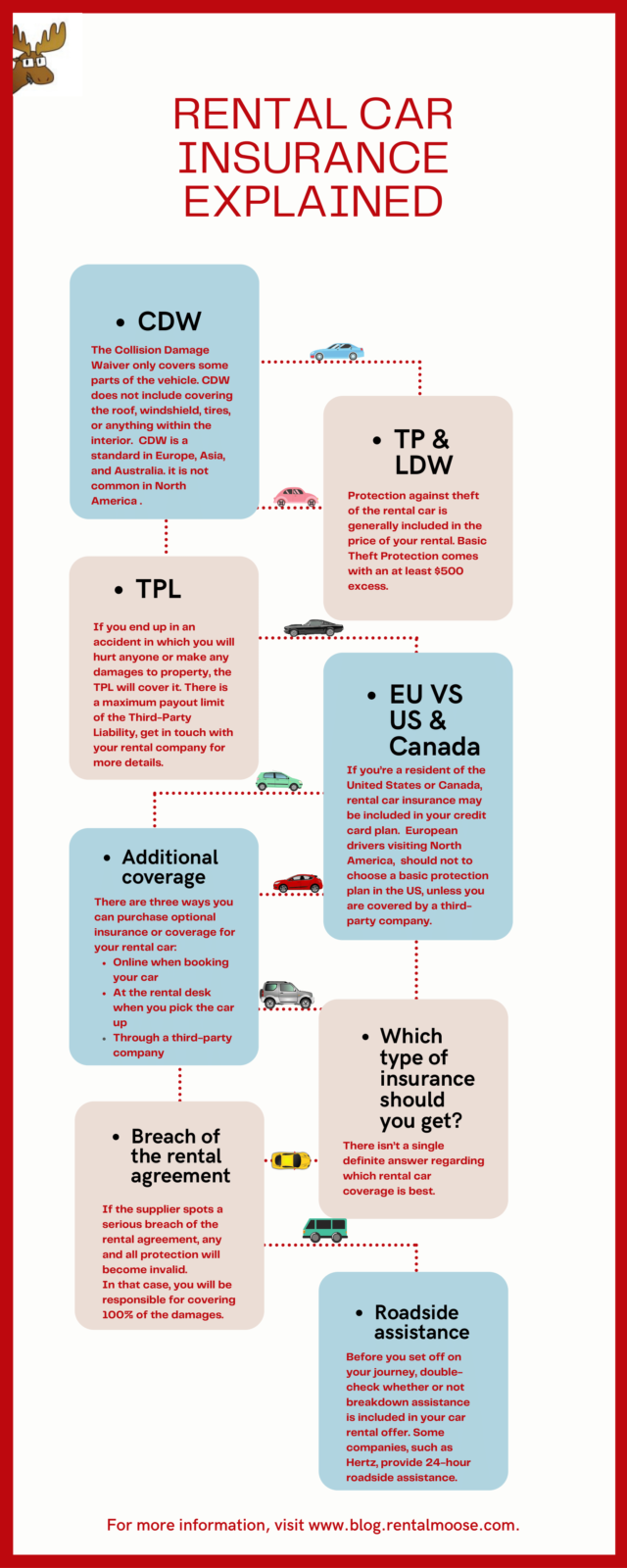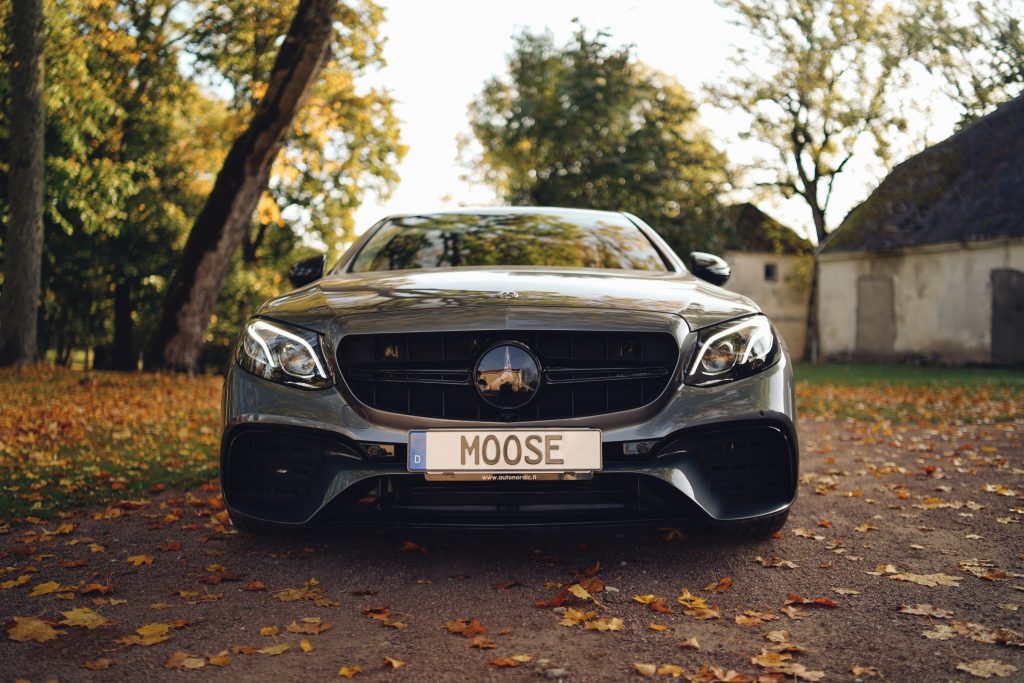Everything You Need To Know About Rental Car Insurance
Picking the right insurance for your rental car can be stressful, especially if you haven’t rented a car in the past. While discovering your destination by rental car is extremely convenient, your experience may get unnecessarily confusing when it comes to selecting insurance.

You’ll be happy to hear that rental car insurance is quite straightforward, as long as you know the types of coverage and their limitations. Below, you will find your ultimate know-how guide to rental car insurance. This blog post will cover:
- CDW
- TP & LDW
- TPL
- Rental car insurance in EU VS US & Canada
- Additional types of insurance
- Third-party insurance
- Which type of insurance should you get?
- Breach of the rental agreement
- Roadside assistance
However, the car rental company may attempt to sell you their premium insurance at the rental desk right before you pick up the car. Keep in mind that you will be charged a fee that’s higher than standard if you decide to add insurance from the supplier at the very last minute.
If you’re on the go, check out this helpful infographic. Feel free to save it on your phone for future reference!

Standard types of insurance
First of all, it’s important to note that the insurance on your rental car is a bit different than the one you have for your private vehicle. Rental cars practically anywhere across the world will come with these types of coverage as standard.

CDW- Collision Damage Waiver
The car’s basic insurance against damage is referred to as the Collision Damage Waiver or CDW in short. Keep in mind that the Collision Damage Waiver only covers some parts of the vehicle. Typically, the CDW coverage does not include elements such as the roof, windshield, tires, or anything within the interior.
In case of any damage to the rental car, the renter is liable to pay a part of the repair costs. The highest possible amount to be paid is referred to as the excess or deductible.
The excess can range anywhere between $0 to thousands of dollars. Rental car companies offer excess reduction, but more on that in a moment.
Rentalmoose insider tip: More often than not, rental car deals that appear very inexpensive at first sight can come with a ridiculously high excess. Make sure you double-check before finalizing the booking.
Be sure to check the rental company’s T&Cs to make sure what is covered by the CDW before picking up the rental car.
While the CDW usually comes as standard for rental cars in Europe, Asia, and Australia, it is not as common in North America. Take a look below for more details.
You are responsible for your rental car during the rental period, so make sure you know what type of coverage is included in the offer.
Theft Protection or Loss Damage Waiver

Protection against theft of the rental car is generally included in the price of your rental, too. Similarly to the CDW mentioned above, basic Theft Protection comes with an excess.
The amount of the excess varies depending on the car type, region, and the rental company itself. You can expect it to be at least $500 without any additional protection packages.
Keep in mind that the theft protection will only cover the rental car and not any personal belongings left inside.
Sometimes, the Theft Protection and Collision Damage Waiver are classified as one type of protection by the rental company. In that case, it is called the Loss Damage Waiver.
Third-Party Liability
The third type of protection that typically comes as standard with a rental car is Third-Party Liability or TPL in short. If you end up in an accident in which you will hurt anyone or make any damages to property, the TPL will cover it.
Keep in mind that there is a maximum payout limit of the Third-Party Liability, get in touch with your rental company for more details.
TPL does not cover the rental car itself at all.

Note- rental car insurance in the US and Canada
As mentioned above, the CDW and Theft Protection do not come as standard with every rental car in the US and Canada. If you’re a resident of the United States or Canada, rental car insurance may be included in your credit card plan.
If you’re unsure, it’s best to check directly with your credit card company. Note that the same card must be used to book the rental car.
For the same reason, European drivers visiting North America should keep this in mind when booking their rental cars. Make sure not to choose a basic protection plan in the US, unless you are covered by a third-party company.
Although the basic protection plan in the US and Canada may not include CDW or TP, all rental cars will still be equipped with Third-Party Liability protection. However, Rentalmoose strongly recommends adding more cover just in case.
Additional types of insurance
As a renter, you can opt for additional insurance on top of the basic coverage provided by the car rental company. Note that although extra insurance is not mandatory, it can come in handy in the event of any unpleasant surprises.
Accidents can happen even to the best drivers on the planet. Rentalmoose recommends adding additional protection when renting a car. It may slightly raise the cost of your trip, but it can save you lots of your hard-earned money in case of damage.
There are three ways you can purchase optional insurance or coverage for your rental car:
- Online when booking your car
- At the rental desk when you pick the car up
- Through a third-party company
Let’s go through them more thoroughly.
Online when booking your rental car
When you book your rental car via Rentalmoose.com, you will find what type of coverage is included in your booking details.
Extra coverage by the rental car company can reduce your excess or add protection to parts of the vehicle that aren’t covered by the basic insurance, such as the windshield or even your personal insurance. The tariffs vary depending on the company and rental location.
Please note that adding optional coverage during the online booking process will be cheaper than purchasing it at pick-up.
At the rental desk when you pick the rental car up
During the pick-up of your rental car, the staff will offer you additional protection if you haven’t purchased it online. The protection plans will be similar to the ones offered when booking your car, such as reducing the excess or theft protection of your personal belongings.
Keep in mind that the rates can be higher than when purchasing the same plans online.
Through a third-party company
You can decline the coverage offered by the rental company in favor of external insurance purchased from a third-party company. In general, the companies that offer standalone rental car insurance vary depending on the country you’re renting the car in.
Some of the companies worth checking out include:
And many more! Remember the double-check the company’s legitimacy before purchasing any additional protection.
Note: Third-party rental car insurance packages will require the renter to cover the repair cost to the rental company. Then, the insurance company will refund the renter. You will still need to pay upfront for the damages and then claim your money back via the insurance company.
Which type of insurance should you get?
There isn’t a single definite answer regarding which rental car coverage is best.
Breach of the rental agreement
Make sure to drive safely when renting a car anywhere in the world. If the supplier spots a serious breach of the rental agreement (i.e. driving under the influence, driving to another country not permitted in the agreement, etc) any and all protection will become invalid.
In that case, you will be responsible for covering 100% of the damages.
Extra tip: Roadside assistance
The last thing you want during your holiday is to be left in the middle of nowhere with a rental car that’s broken down.
Although the technical condition of the car can be perfect at pick-up, a breakdown could happen during the rental period. Similarly to collisions, car breakdowns are often impossible to predict.
Before you set off on your journey, double-check whether or not breakdown assistance is included in your car rental offer. Some companies, such as Hertz, provide 24-hour roadside assistance if your car breaks down anytime during the rental period.







